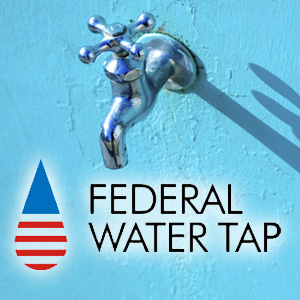The Stream, May 22: Water Efficiency Improves in U.S. Cities, Lags In Rural Areas
The Global Rundown
Water efficiency has improved in U.S. cities over the last 30 years, but rural areas are being left behind. The World Health Organization predicts Yemen could see hundreds of thousands of cholera cases during the next six months. Aid agencies warn that millions of people in Somalia still need food assistance despite recent rains. Inadequate water infrastructure means the slums of Buenos Aires must contend with both floods and water shortages. California’s Central Valley lost 10 cubic kilometers of groundwater each year during the drought. The drought in Sao Paulo, Brazil raised the city water utility’s debt load by 50 percent. Bottled water companies in New Zealand are paying just a fraction of what residential customers pay for water.
“This is the population that has its rights broken more than anyone in the city. In Buenos Aires slums, we’re seeing a violation of lots of rights, especially access to water.” –Pablo Vitale, coordinator of Argentina’s Civil Association for Equality and Justice, commenting on inadequate water service and management in the poorest neighborhoods of the country’s capital. Residents of the slums experience both floods and water shortages, sometimes simultaneously. (NPR)
By The Numbers
300,000 cholera cases Number that could occur over the next six months in Yemen, where poor access to water and sanitation is exacerbating an outbreak of the disease, according to the World Health Organization. A separate cholera outbreak in Kenya has killed two people and sickened five others. Reuters
10 cubic kilometers Amount of groundwater lost from California’s Central Valley each year during the recent drought, according to researchers at UCLA and the University of Houston. UCLA
In context: In California’s Central Valley, dry wells multiply in the summer heat.
50 percent Increase in the debt carried by Sabesp, the Brazilian water utility that serves Sao Paulo, between 2013 and 2015 when the city suffered a severe drought. The utility is considering raising new equity to expand and improve its infrastructure. The New York Times
In context: Sao Paulo’s water waiting game avoided rationing but produced huge risk of severe shortage.
$0.003 Average cost of a cubic meter of water sold to bottled water companies in New Zealand, approximately 500 times less than the rate paid by residential water customers. New Zealand Herald
Science, Studies, And Reports
Improvements in water efficiency in the United States have largely accrued in cities, according to a new study that analyzed water use data over the past 30 years. Researchers at North Carolina State University say the performance gap between urban and rural areas is likely attributable to different levels of investment in water-saving technologies and infrastructure. “Rural counties appear to lack the resources, the political will, or both, to keep pace,” said lead author Sankar Arumugam. American Geophysical Union
On The Radar
Aid agencies warn that malnutrition remains a potent threat in Somalia, despite recent rains that have helped ease drought conditions. Six million people are still in need, including 360,000 acutely malnourished children, according to the head of the International Committee of the Red Cross in Somalia. Reuters
A news correspondent for Circle of Blue based out of Hawaii. She writes The Stream, Circle of Blue’s daily digest of international water news trends. Her interests include food security, ecology and the Great Lakes.
Contact Codi Kozacek





